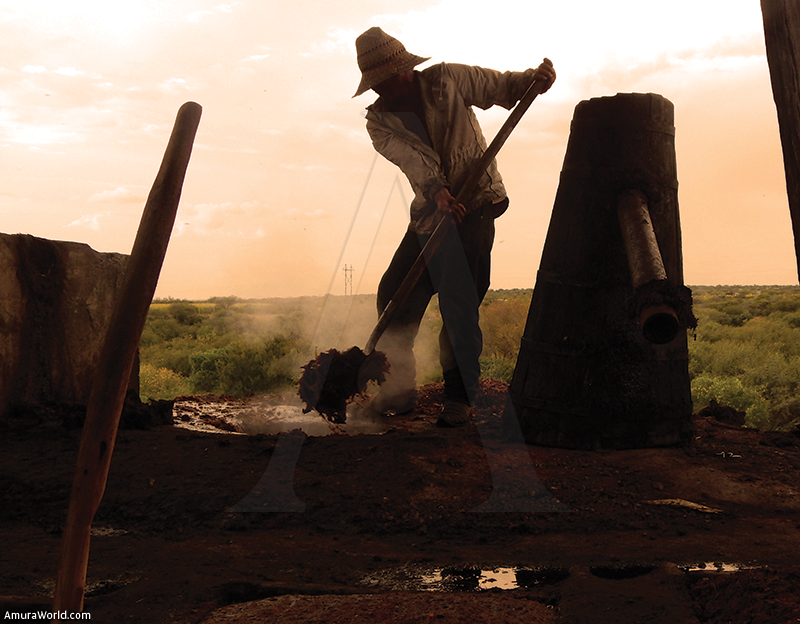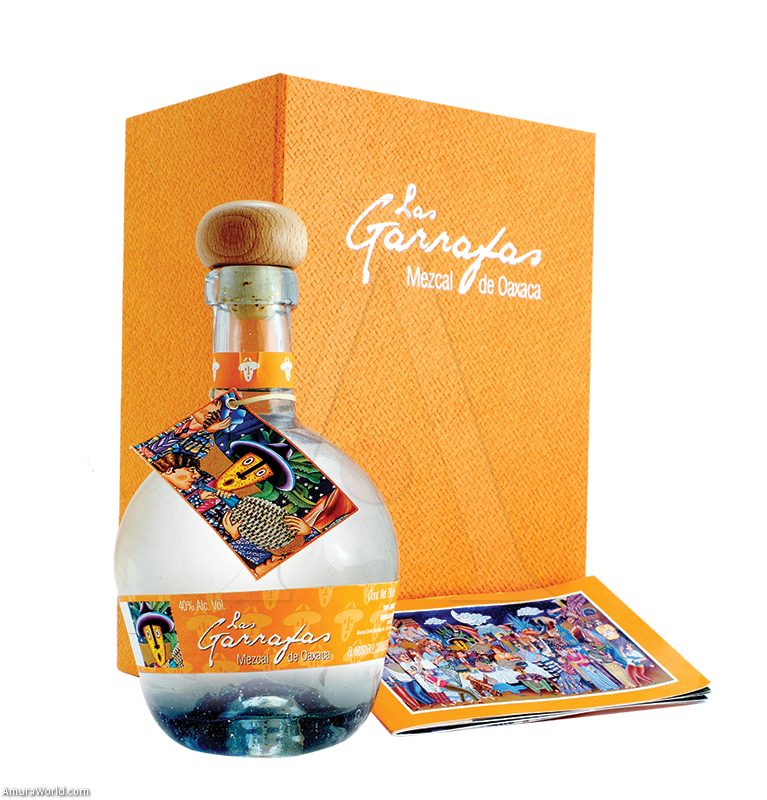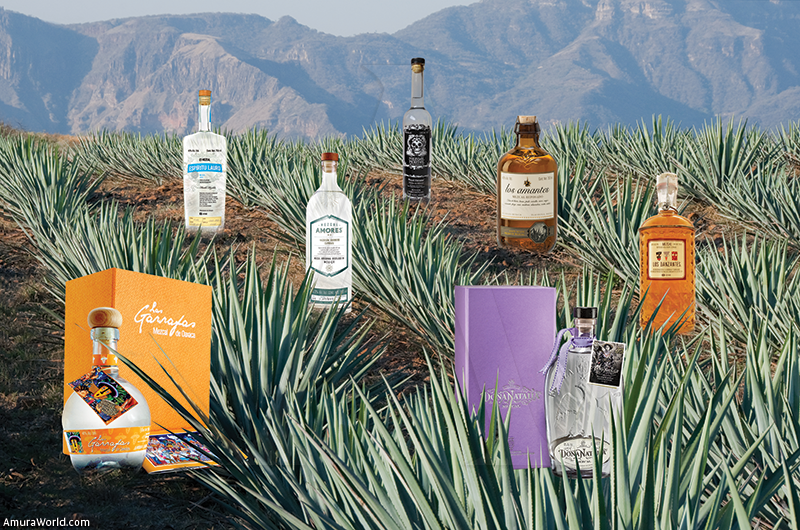Tradition of the prehispanic villages of Mexico
In Pre-Hispanic Mexico, a fermented drink called Mexcalli was consumed. This drink was made of the juice of the agave, derived from the cooking of its crushed heart. In Nativitas, Tlaxcala (Cacaxtla), cooking pots made of clay that were used in 400 BC by the inhabitants of the region to cook the drink; today this procedure is still carried out in the pots of clay, with some variances. With the arrival of the Spanish, who brought the stills from the Filipinas Route, and the distillation process developed by the Arabs, the fusion happened that resulted in the Mezcal as we know it. This was the first distilled drink of the world, with a difference of 1,400 years prior to the first whiskies.
PROCESS
The process of the Mezcal begins with the growing of the Maguey (a type of agave), selecting mature plants based on their type and age, which can go from 8 to 20 years, depending on the species. The “jima” is the process of cutting the “leaves” (pencas) until reaching the “heart” (piña) of the agave, which can weight anywhere from 20 to 650 kilos. The hearts are cut into pieces, depending on the style of the Maestro Mezcalero (Master of Mezcal), and are piled on a conical furnace inside of which a fire is started with oak Wood and river stones, which, when they heat enough to turn red, they get the pieces of the hearts to be cooked.
Once the process has started, the furnace is covered with soil to allow the heat and the smoke begins the magic transformation of the starches of the heart into sugars. Afterwards, they are extracted to be milled, process which consists of grinding the fragments of the cooked heart in a Stone mil, moved by a mule or by hitting a mallet on an oak wood canoe until the chaff is lose, and has an aroma and a flavor that are, both, very sweet. Here is where the sugars are extracted to be fermented.
The chaff of the agave is set in wooden jars where spring water is added to begin the fermentation process. This ferment and the chaff are put together in copper stills of discontinued distillation or pots of clay, to be separated and evaporated and condensed. This phase is repeated and the liquid that is obtained in the second distillation is the one that has the fabulous flavor and aroma of the Mezcal.
THE ART OF MAKING MEZCAL
In a place like Mexico, where traditions, habits and customs intertwine with the indigenous cultures, is where the daily living turns into art. In their tapestries and their architecture, as well as their painting and gastronomy, you can detect the ability of which emerges the beauty to transform, for example, a simple plant into a drink that is almost spiritual. The Maestro Mezcalero (Master in Mezcal), involved in its manufacture is an artist, who keeps the rituals of the Chamán. This Maestro in his doing uses ancestral techniques to create a work of art through his knowledge, his heart, his soul and his spirit.
ALLEGORY WITH THE WINE
If we talk of a drink that can compare, in its variety and ancestral richness, with the wine, it is the Mezcal. Besides the years that it has been produced, its mystical history and the different varieties of the agave and the regions where it is produced, derive from a very rich ancestral culture.
We can talk of the different varieties of agave as well as of the different varieties of grapevines, and how, each one of them, has characteristics of the earth, the height and the water, the fruit trees and bushes that surround them, as well as the weather. And as many wines, in the Mezcal there are also mixtures that give the drinks more interesting and capricious characteristics.
VARIETIES
In Mexico there are over 30 varieties of agave to produce Mezcal. Some of them are the espadín, the tobalá, the cerro or cenizo, the cupreata, the salmiana, the madre cuishe, the tepeztate, the arroqueño or the duranguense. From them there are mixes that can be arranged to play with the notes and characteristics of the Mezcal, for each one of the varieties has its own personality.
Oaxaca is the zone where the most variety of agave can be found, that is reason for the regional richness of its Mezcal. However, the Certificate of Origin is shared with other States: Durango, Zacatecas, San Luis Potosí, Guanajuato, Michoacán, Guerrero and Tamaulipas. That is one of the reasons for the different types of Mezcal, based in their production: Pot, Pot of Clay, Still, and the mixed ones, that are distilled in any of the manners available.
Finally, we can only add a saying of the popular wisdom: “For all wrong, Mezcal, for all good too, and if there is no solution, then a liter and a half”.
Text: Roque Olivares ± Photo: LA EUROPEA



